Ever wondered how water laughs in a land where rain is a shy guest? The Arabian Desert cradles secret oases like emerald jewels sewn into golden sands—places where date palms whisper ancient trade routes and ibex footprints map forgotten trails. Let’s unveil these liquid miracles, from Saudi Arabia’s “singing wells” to a UAE oasis that moonlights as a UNESCO World Heritage Site.
AL AIN OASIS
Where Date Palms Outnumber People
A 3,000-year-old labyrinth of 147,000 date palms, fed by falaj channels older than Islam. Enter via the East Gate before 8 AM to avoid crowds. Hire a arish (palm frond hut) for 50 AED/hour—perfect for midday shade. Local secret: The Al Muwaiji section hides a 14th-century watchtower where scouts once spotted sandstorms. Don’t miss the “Date Market” every Thursday; barter for khalas dates using the phrase “ana jiranak” (I’m your neighbor) for better prices.
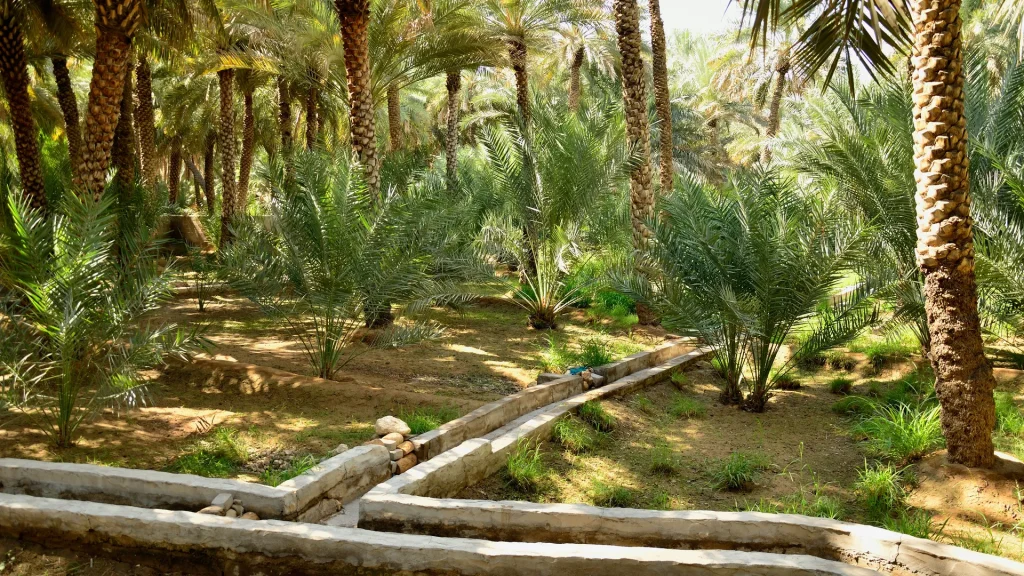
WADI BANI KHALID
Oman’s Forbidden Pool
Just 200 km from Dubai, this oasis defies logic: turquoise pools spill from caves where cave swiftlets nest. Swim in Muqal Cave’s “Emerald Chamber” (free, but guides charge 100 AED to navigate tunnels). Warning: Respect the dishdasha dress code—knees and shoulders covered. Locals swear the water cures arthritis; scientists credit its magnesium levels. Camping tip: Pitch tents near Ain Hamouda spring—its 27°C water stays warm all night.
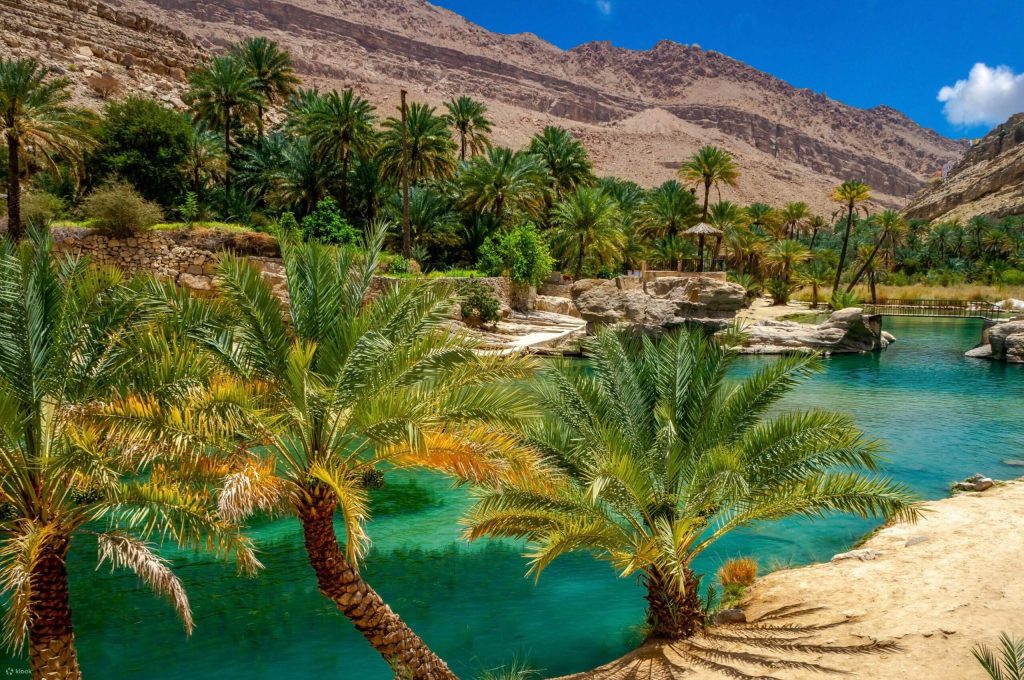
TAYMA OASIS
Saudi Arabia’s 5,000-Year-Old Water Library
Home to Bir Haddaj, a well so deep its pulley system employs 40 camels (still used every Tuesday). Visit off-season (June–August) to avoid 45°C heat. The Saudi Commission for Tourism issues free permits online. Archaeologist’s gem: The Qasr Al Radm fortress’s walls have Thamudic inscriptions—pre-Arabic scripts shaped like desert fauna. Stay at Tayma Guesthouse (300 SAR/night) for jareesh breakfasts with Bedouin hosts.
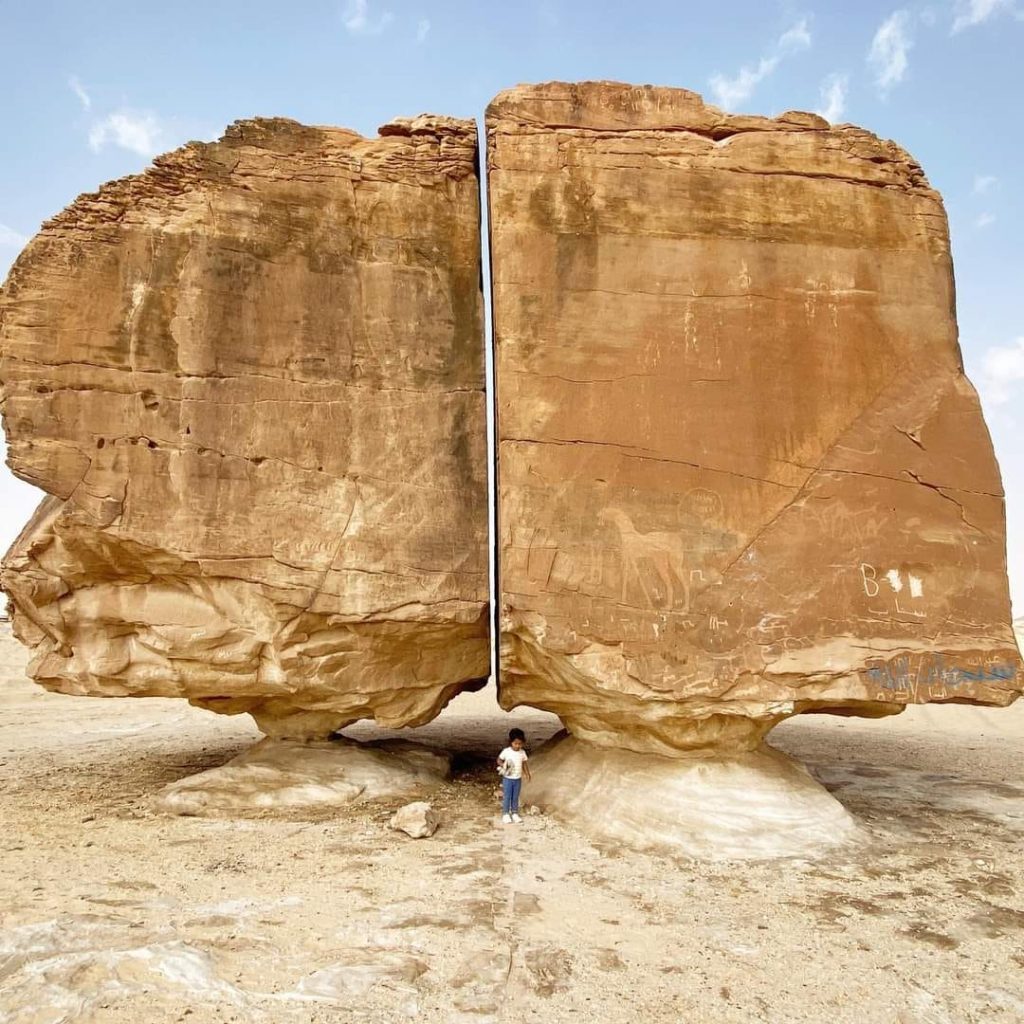
LIWA OASIS
The UAE’s Desert Breadbasket
Over 50 farms here grow meylas dates, a variety so sweet it’s dubbed “liquid gold.” Time your visit for the Liwa Date Festival (July)—farmers trade 1-ton crates like stockbrokers. Drive the Liwa Crescent Road at dusk; its 40-km loop frames dunes as pink as flamingo wings. Forbidden fruit: Never pick ghaf seeds—they’re key to the UAE’s desert reforestation.
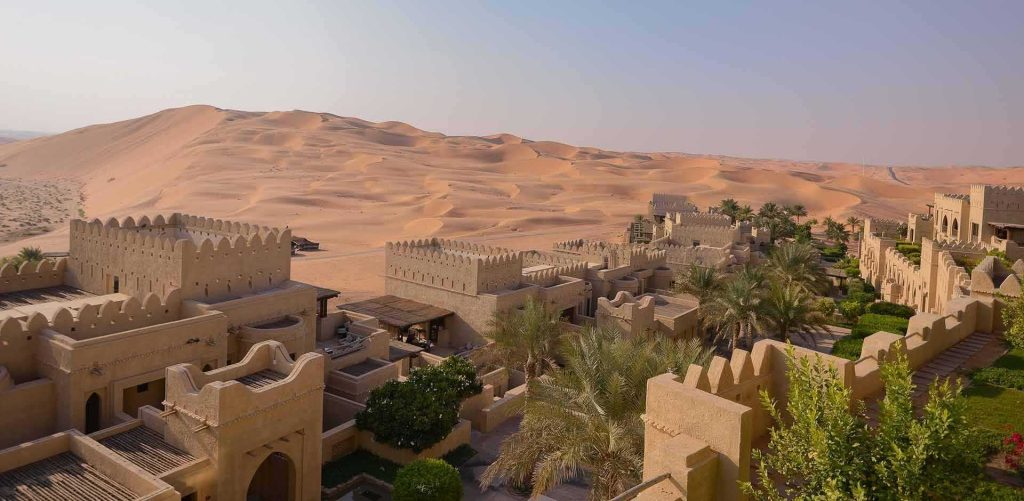
DUMAT AL-JANDAL
Where Queen Zenobia’s Ghost Bathes
This Saudi oasis near the Jordanian border once quenched the Palmyran queen’s army. Today, Marid Fort’s 1,200-year-old stone gutters still channel spring water. Hire a 4×4 (800 SAR/day) to reach the “Whispering Wells”—their echo mimics voices from the 4th century. Cultural must: Ask elders about the Al Dar’i tree; touching its bark allegedly reveals your true age.
HUWAYLAT
The UAE’s Forgotten Moon Oasis
Abandoned in the 1970s, its crumbling mud houses now shelter desert hyraxes. Navigate via GPS pin 24.0836° N, 55.7880° E—no signs exist. Full moon nights reveal petroglyphs of oryx camouflaged on rocks. Survival tip: Pack a Geiger counter; the area has harmless but fascinating uranium traces. A www.few.ae editor’s midnight visit here inspired a poetry anthology—true story.
AL-HASA OASIS
2.5 Million Palms & One Underground River
Saudi Arabia’s largest oasis floats atop the Al-Jawf aquifer—a water stash larger than Lake Geneva. Join the 6 AM “Farmer’s Walk” to harvest khalas dates using mabtah knives (rented for 50 SAR). Don’t miss Al Qarah Mountain’s caves; their 19°C air cools even in August. Local law: Never photograph women washing clothes at Ain Najm spring—it’s a privacy haram.
UMM AL QUWAIN OASIS
The Mangrove’s Secret Twin
Most tourists flock to mangroves, but this freshwater haven 30 minutes from Dubai hides lotus flowers and 200 bird species. Kayak rentals (120 AED/hour) include waterproof maps of submerged Neolithic tools. Forbidden act: Disturbing the “Bird Council”—a tree where herons roost like feathered parliament. Visit during suhoor (pre-dawn) in Ramadan; farmers serve free thareed stew to explorers.
RUB’ AL KHALI OASIS
The “Empty Quarter” Mirage That’s Real
GPS coordinates 19.5° N, 53.3° E reveal a nameless spring used by Bedouin smuggling frankincense. Access requires a Saudi permit and a local guide (1,500 AED/day). The water’s pH is 8.4—same as the human body. Survival hack: Tie a mashlah cloth over your mouth; sand here is finer than baker’s flour. A www.few.ae editor’s 2022 expedition here found 4th-century Roman coins—proof of lost trade routes.
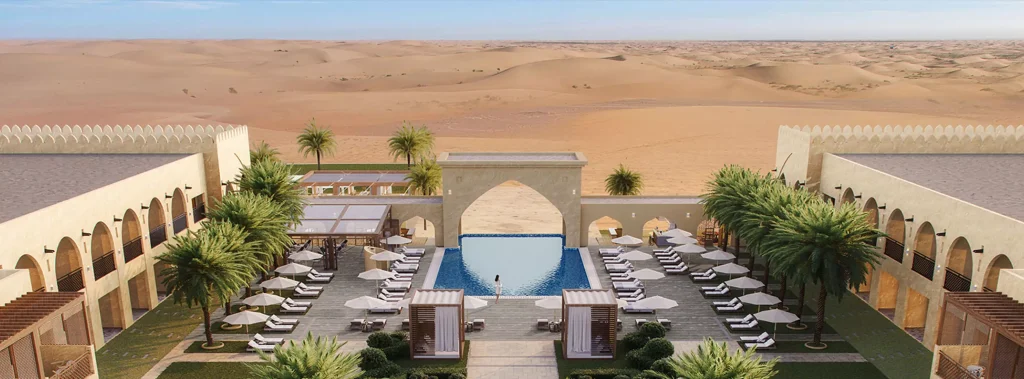
OASIS ETIQUETTE
Unwritten Rules of Desert Hospitality
Never refuse gahwa (coffee) from a Bedouin tent—it’s like slamming a door. Leave a 10 AED note if taking spring water; it’s considered “buying rain.” Photographing people? Say “suwar tadhkira” (memory pictures) to avoid offense. Most importantly: Oases are living museums. Take nothing but sabah al-khair (good mornings), leave nothing but gratitude.
The desert’s oases aren’t just water sources. They’re diaries of civilizations that danced with dunes and won. Pack curiosity, tread lightly, and remember—every sip from these springs is a toast to humanity’s oldest survival story.


 then "Add to Home Screen"
then "Add to Home Screen"